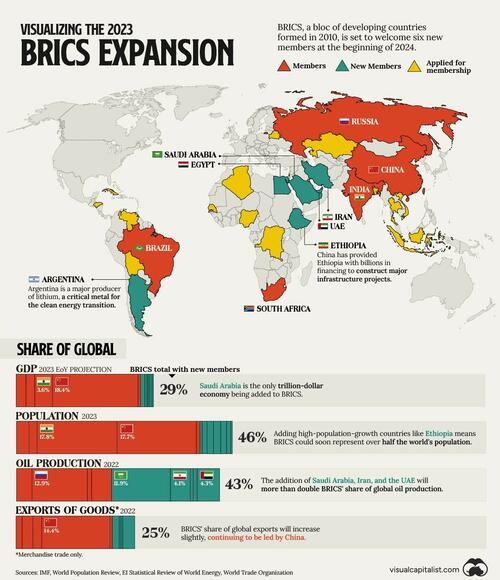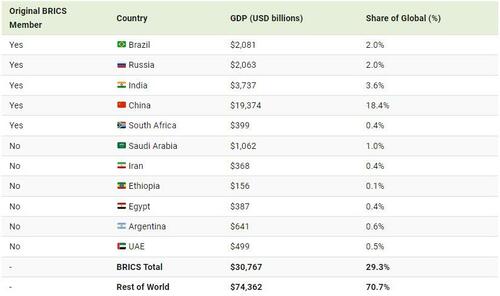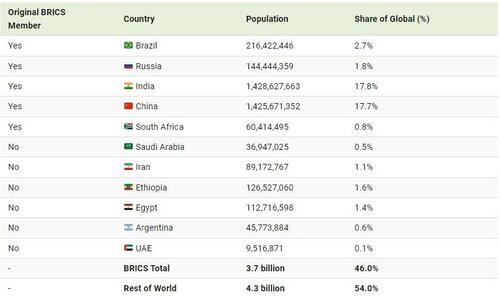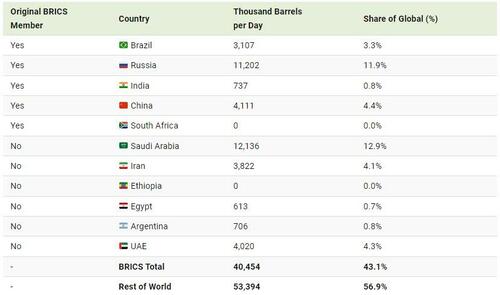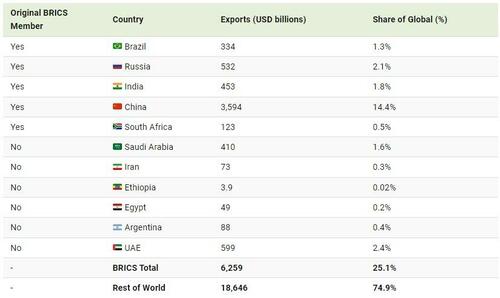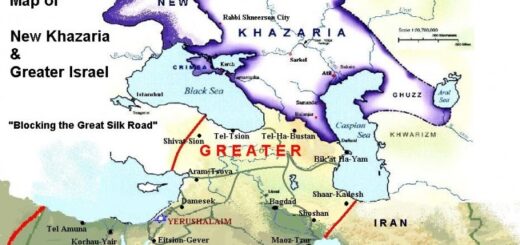The Ever Growing BRICS Coalition; 40 NATIONS Lined Up to Join; Why the U.S. MUST Join the BRICS

Visualizing The BRICS Expansion In 4 Charts
BRICS is an association of five major countries including Brazil, Russia, India, China, and South Africa. Distinguished by their emerging economies, the group has sought to improve diplomatic coordination, reform global financial institutions, and ultimately serve as a counterbalance to Western hegemony.
On Aug. 24, 2023, BRICS announced that it would formally accept six new members at the start of 2024: Saudi Arabia, Iran, Ethiopia, Egypt, Argentina, and the United Arab Emirates (UAE).
In this graphic, Visual Capitalist’s Marcus Lu and Bhabna Banerjee provide a data-driven overview of how the BRICS expansion will grow the group’s influence and reach.
Share of Global GDP
Because most of the new BRICS members are considered to be developing economies, their addition to the group will not have a major impact on its overall share of GDP.
The following table includes GDP projections for 2023, courtesy of the IMF.
The original six BRICS members are expected to have a combined GDP of $27.6 trillion in 2023, representing 26.3% of the global total. With the new members included, expected GDP climbs slightly to $30.8 trillion, enough for a 29.3% global share.
Share of Global Population
BRICS has always represented a major chunk of global population thanks to China and India, which are the only countries with over 1 billion people.
The two biggest populations being added to BRICS are Ethiopia (126.5 million) and Egypt (112.7 million). See the following table for population data from World Population Review, which is dated as of 2023.
It’s possible that BRICS could eventually surpass 50% of global population, as many more countries have expressed their desire to join.
Share of Oil Production
Although the world is trying to move away from fossil fuels, the global oil market is still incredibly large—and BRICS is set to play a much bigger role in it. This is mostly due to the admission of Saudi Arabia, which alone accounts for 12.9% of global oil production.
Based on 2022 figures from the Energy Institute Statistical Review of World Energy, BRICS’ share of oil production will grow from 20.4% to 43.1%.
It’s worth noting that China has been pushing for oil trade to be denominated in yuan, and that Saudi Arabia’s acceptance into BRICS could bolster this ambition, potentially shifting the dynamics of global oil trade.
Share of Global Exports
The last metric included in our graphic is global exports, which is based on 2022 data from the World Trade Organization. We can see that the BRICS expansion will grow the group’s share of global exports (merchandise trade) to 25.1%, up from 20.2%.
Unsurprisingly, China is the world’s largest exporter. Major exporters that are not a part of BRICS include the U.S. (8.3%), Germany (6.6%), the Netherlands (3.9%), and Japan (3.0%).
Who Else Wants to Join?
According to Reuters, there are over 40 countries that have expressed interest in joining BRICS. A smaller group of 16 countries have actually applied for membership, though, and this list includes Algeria, Cuba, Indonesia, Palestine, and Vietnam.
As the group grows in size, differing opinions and priorities among its members could create tensions in the future. For example, India and China have had numerous border disputes in recent years, while Brazil’s newly elected President has sought to “kickstart a new era of relations” with the U.S.
One thing that is certain, however, is that a new acronym for the group will be needed very soon.

